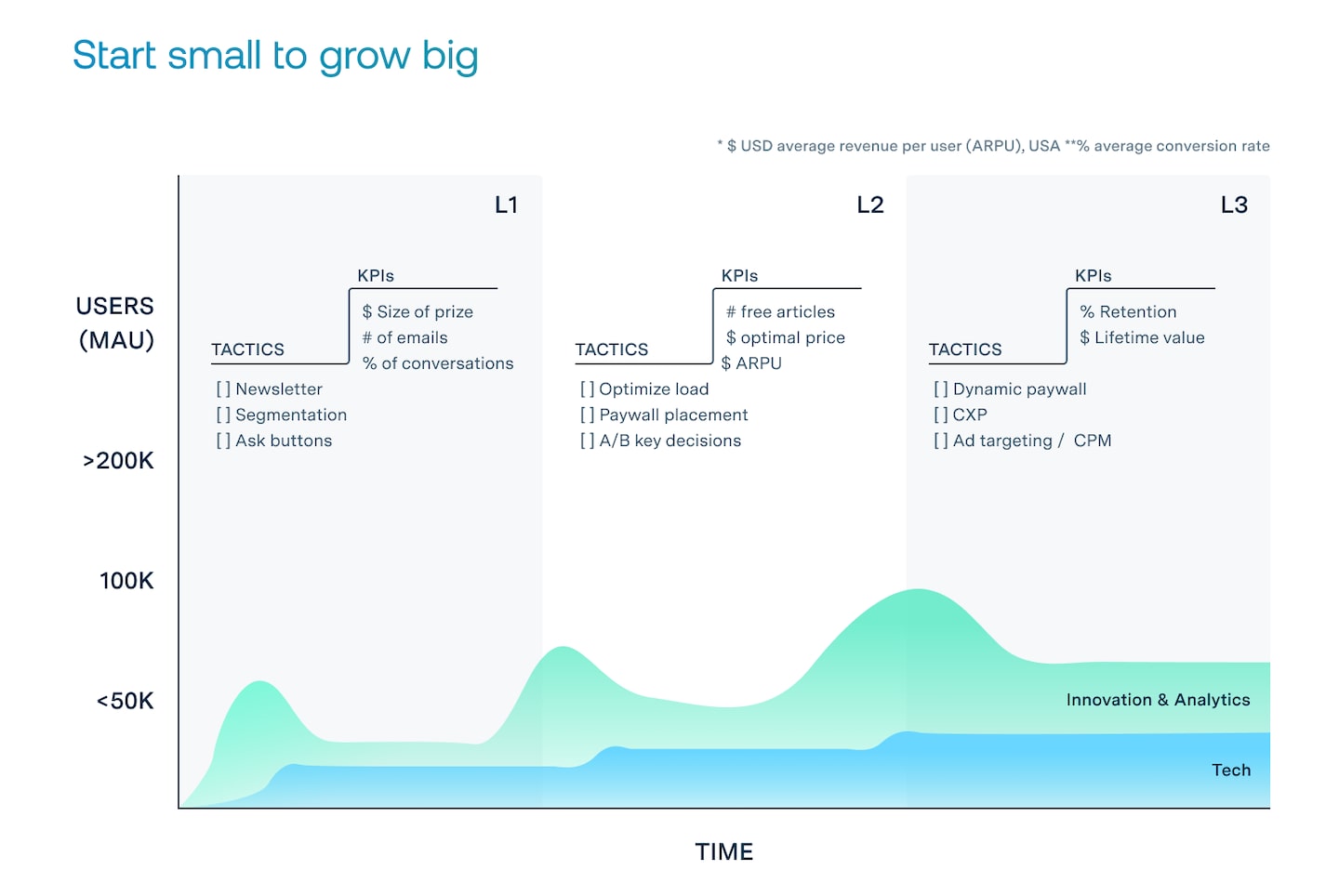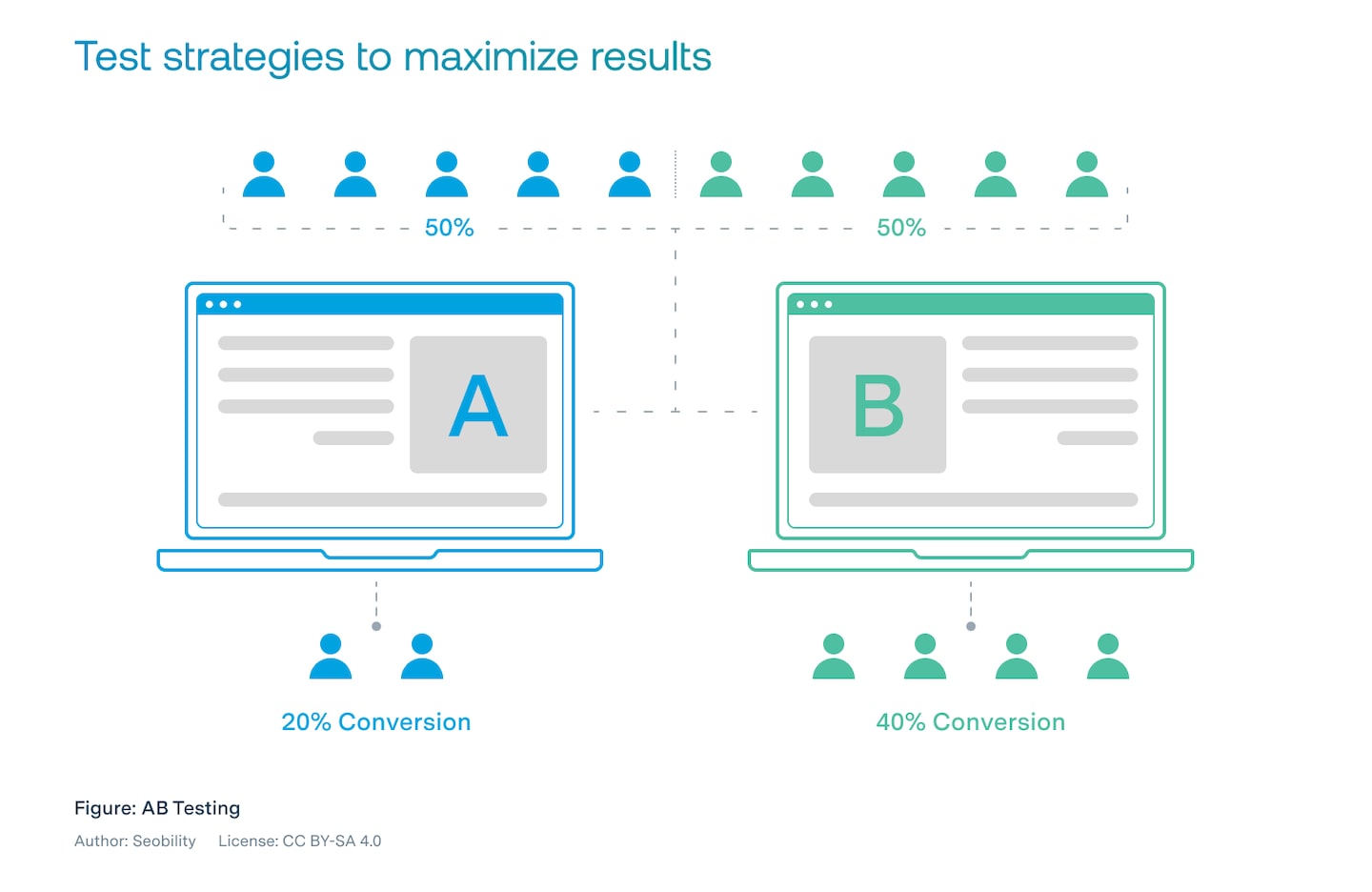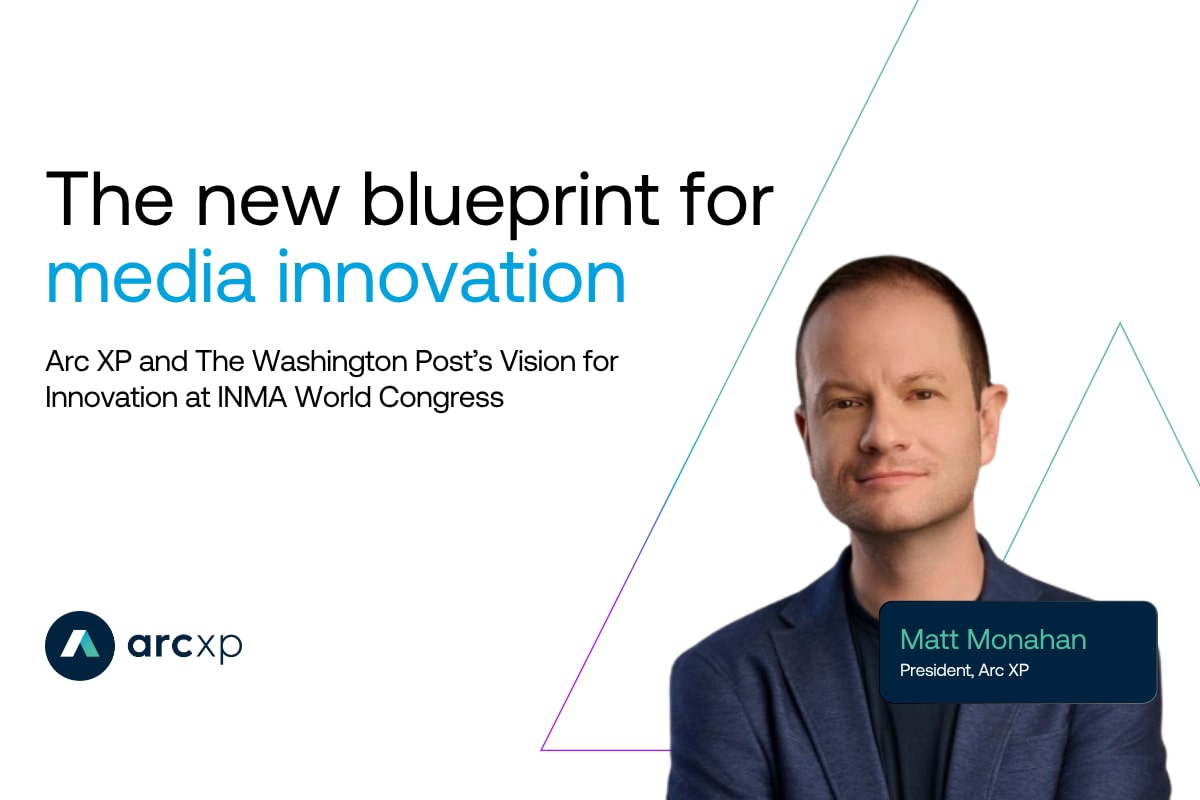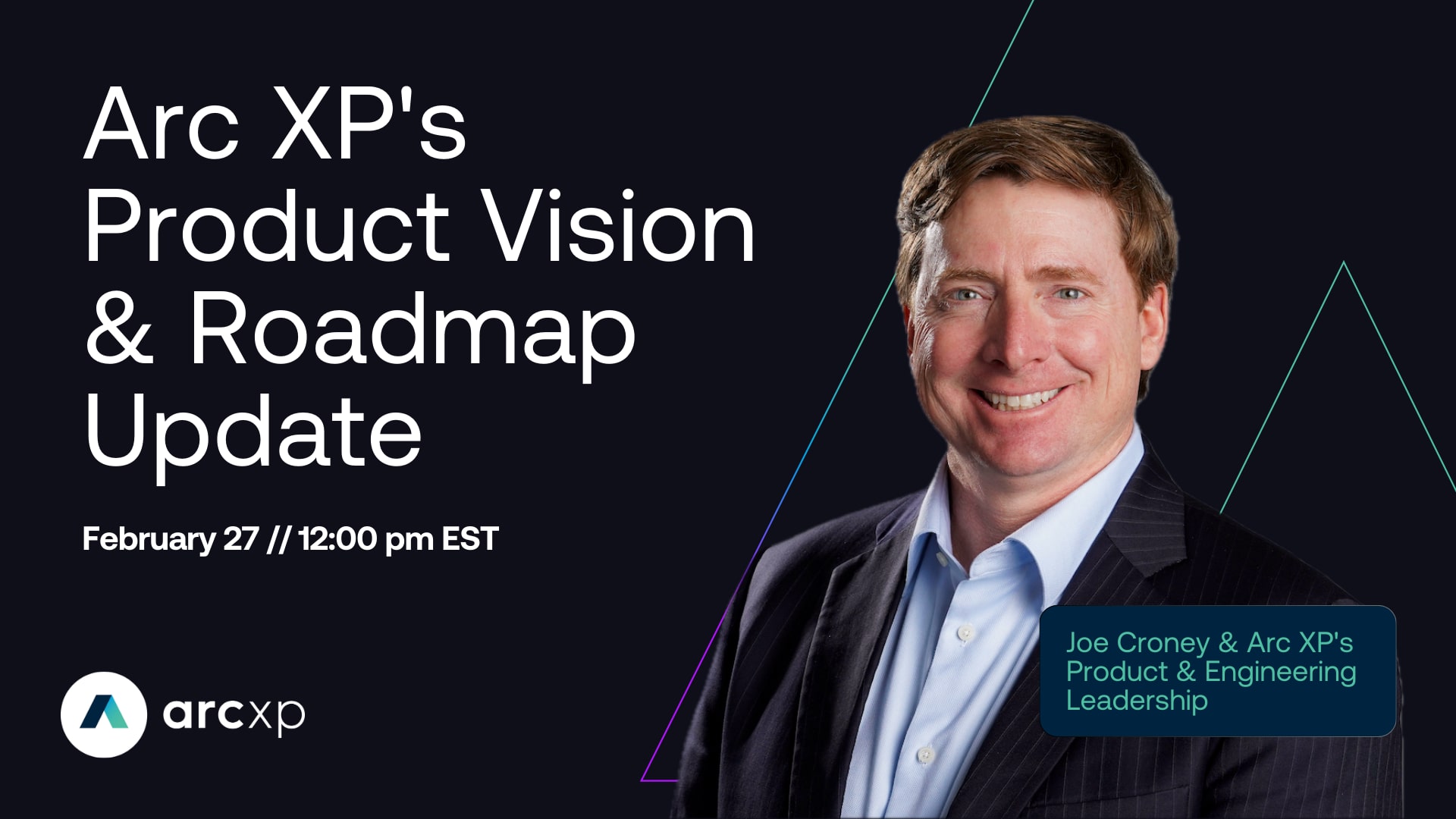Evolve your first-party data strategy
Knowledge is power in the publishing industry, and the knowledge that organizations have — about the communities they serve and more specifically their audience — is the backbone of any successful monetization strategy. There are several data types that organizations can utilize to learn about their audience — the most valuable being first-party data.
First-party data is information that an organization collects directly from its audience. Ryan Gladstone, Director, Product Management at Arc XP, and Nick Nyhan, Managing Director and co-founder of Upside Analytics, share what makes first-party data so important and the strategies that you and your team can employ to use it most effectively.
Why first-party data?
The key difference between advanced subscription publishers and non-advanced subscription publishers is first-party data.
— INMA Executive Director and CEO, Earl J. Wilkinson
Chances are you already collect some first-party data such as emails for newsletters or registration. Email is the cornerstone of a first-party data strategy, but an email with nothing else known is only a start. You will need a way to learn more about the users over time and be able to action that knowledge, not only within your email system but also leverage it in other systems such as registration, paywall, promotions, CMS, in-house ad inventory, and supply-side ad servers.
But what data and where to start? That will take a first-party data strategy. If your organization doesn’t have a first-party data collection strategy in place, it’s not too late, but it takes some time so now is the time to start. Adding to that urgency is the data deficit that is coming for publishers who have relied on data from third-party cookies which are being deprecated by major browsers making that data harder to see and use in the future. So, you need to fill the gap and get started.
What is first-party data?
First-party data is generally the data a user provides you directly. It can be email as we said, but also name, address/geo, demographics, interests/preferences, answers to survey questions and any behavioral data you can append from your own CMS, payment, email systems. First-party data is considered the highest-quality data available because the information is willingly provided directly from the source: your audience. Unlike second- or third-party data, first-party data is proprietary and more accurate and updated than when it comes through other sources. Moreover, you can use it on a granular level to improve how you serve and grow engagement, even creating bespoke audience segments unique to your market and content, after all its your data to shape and use. That flexibility, coupled with the sense of accuracy, the browser changes and the evolving privacy laws makes first-party data a critically valuable organizational asset.
Strategically, first-party data is particularly important to gather and use to enrich BOTH audience and advertising revenue models. When effectively deployed, the strategic collection of first-party data leads to higher audience conversion rates. Organizations that gather first-party data are more valuable to advertisers and, therefore, are able to charge higher rates. Audiences are also more willing to provide first-party data if they see you as a trusted information source, if they hear it helps them have a smoother login experience, or a more relevant and personalized experience. When explained well, it is a win for you and your audience.

Whether your first-party data collection practices are firmly established or just getting off the ground, here are a few strategies you can use to take it to the next level.
But first, define where you are
You won’t be able to develop sophisticated data collection practices overnight without getting completely overwhelmed. Your journey will be gradual, and you’ll continue to build upon your established strategies as you progress. Small wins will help you and your organization see it is working and reduce the concern of overcommitting to bigger projects.
When developing your organization’s strategic roadmap for first-party data collection, it can be helpful to conceptualize the journey with a three-level model. You have to crawl before you can walk, and you have to walk before you can run.

Before you start employing any new strategies, determine where your organization is in its journey. Are you crawling, walking, or running? The answer will help you identify the appropriate steps to take next.
Level 1: Crawl
Segments are the key to driving more sophisticated business strategies with your audience. At level one, you’ll introduce some basic segmentation principles and practices to your organization’s data strategies. Start your journey by gathering data and creating easily-addressable audience segments that you can use to advance both your audience revenue and advertising revenue strategies.
Keep in mind, it’s important not to introduce too much sophistication too quickly when you’re crawling. Identify the tactics you’re going to use, and choose the tools that are most appropriate to your level. Arc XP Subscriptions has all the basic tools you need to get started at this stage, as well as more advanced capabilities that you can enable in future stages.
1. Gather email addresses: If you’re not sure where to start, this is where to do it. Putting together an email list is a basic priority of first-party data. This single piece of information is the most important piece of data to many systems - from CRM (customer relationship management) to advertising and registration. If you’re going to ask for anything, ask for email addresses. An effective way to get this information is to add a simple incentive for your audience. Try offering access to a newsletter or other gated content in exchange for an email address. This can enable your first-party data collection and drive engagement at the same time.
2. Set up segmentation: Once a user has provided you with their email address, they’ll be more likely to provide you with other pieces of information, too. You can use this opportunity to ask questions of your audience that will help you begin to create audience segments. Try looking around for existing real estate that you can use to place your asks. The “thank-you” page following registration is an underutilized location and a great place to start. After capturing an email address, prompt a quick response to a brand affinity question – like “why are you interested in our content?” This is a basic but important data point you can use when you start building your segments.
3. Start connecting the dots: Once you have implemented email and basic survey data collection in place, you have almost everything you need to start creating simple but powerful addressable segments. All you need to do now is start tracking engagement. There are a lot of different ways to do that, but Google Analytics is a great place to start. With brand affinity and engagement data, you can begin to assign scores to your audience based on their propensity to subscribe or donate to your organization. High brand affinity and high engagement usually correlates to a higher likelihood to pay. Use those propensity scores to sort your audience into categories of high, medium, and low likelihood to pay. Those are your first basic segments which help you see who is the “sweet spot” within your user base. As more people get put into the appropriate segments, it can provide immediate utility to identify your priority users for audience revenue. Moreover, you already have established a low maintenance data collection mechanism to collect and connect more data that will help you with advertising revenue in future stages (Note: Geo can also be useful but not required, and there are different ways to capture that)

Level 2: Walk
When you enter the next stage, you should already have established the basic building blocks of your first-party data collection infrastructure. At this point, you can start to introduce new layers of sophistication to extend, fine-tune, and refine your existing strategies.
1. Roll out progressive profiling: To extend the number and type of audience segments that you’re able to create, you’re going to need to gather more data. This will help you build out your profiles and get a more complete picture of your audience. Create additional questions about the information you want to gather from your audience, but don’t pose them all at once. A 15-minute questionnaire can be overwhelming and hard to get completed by your wider audience. Since you need data on lots of people, it is about going smaller and wider. A smarter way is to piece out your survey questions out over time. Ask one question at a time, in places that are easy for users to see and answer (in 1 click) while moving through your content. Also, allow some time to pass before placing another so they are more likely to answer next time. The most engaged members of your audience will progressively form a robust user profile, and you’ll gather more usable data which is fresh, accurate and multi-dimensional.
2. Implement A/B testing: At this stage, one of your main goals should be to refine and optimize the systems you established in the Crawl stage. When considering changes to your website, for instance, it’s a great idea to run A/B tests on your audience to determine the most effective path forward. The propensity scores you developed at the end of the Crawl stage can come in handy here. Focus your A/B testing on your high- and medium-propensity audience segments. Those segments are the most likely to lead to conversions, so it’s generally best to tailor your content to those most willing to pay for it. After all, if you know who is most likely to convert from your segmentation, then you can focus your efforts there: the low-hanging but high-propensity audience members.

3. Tailor your offers: The more data you have, the more explicitly you’ll be able to be target. However you choose to segment your audience, try using the data to share relevant offers. Whether you structure your offers onsite through a paywall or offsite through email communications, tailor everything about the offer to what you know about your audience segment. Offers that are personalized specifically for each segment are more likely to lead to conversions than a single, blanket offer. Moreover, you can see if high-propensity segments will actually pay more than other segments without sacrificing conversion rates.
Level 3: Run
At the Run stage, you’ll be implementing greater levels of sophistication into your first-party data systems and using the information you collect to enable more complex long-term initiatives with more precision.
1. Personalize your site: With enough data to work with, you may be able to tailor your entire site experience to each audience group. With server-side paywall solutions like Arc XP Subscriptions, you can vary what a user sees on a page based on the segment they belong to. You may opt to show fewer ads to dedicated subscribers. Or you might advertise your own organization through in-house advertising to higher-propensity audience segments, but not others. That can make a huge difference, and presents much larger revenue opportunities.
2. Blend and extend your data: No matter how much you know about your audience, there are always opportunities to learn more.
3. So in addition to progressive profiling, data can be potentially sourced from what is already resident within your CMS system or email systems, adding context about interest areas and times of engagement, further enhancing your knowledge and how to serve different segments.
4. Partners like LiveRamp or the Data Cloud can help you fill out audience profiles from any given user ID. You can use this more sophisticated data strategy to extend your own acquisition campaigns on platforms like Google, Facebook, or the Trade Desk. Doing so can help you develop even more advanced strategies that connect to your acquisition, your brand, and your conversion over time.
5. Share your knowledge: When you collect first-party data, it is proprietary information – it belongs to your organization and only your organization. You created it, and you have exclusive rights to use it to inform your decisions about content and monetization strategies. First-party data is a valuable asset, and there are ways you can leverage that value with other organizations to grow it even more. It’s not uncommon for a publisher to enter into an alliance with another to share their permissioned first-party data. It’s as if you and your peers are each bringing a piece of a puzzle to the table and combining them to make something bigger. If you’re all using the same platform – like Arc XP Subscriptions – it will be even easier to pool your data and may present a great opportunity for your organization’s growth.
Following these strategies can help you execute your strategic roadmap and successfully build a sophisticated approach to first-party data. It’s important to use tools that are appropriate to the stage your organization is in, and it’s best to choose tools at the beginning of your journey that can grow with you as you progress, like Arc XP Subscriptions.
Recent resources





